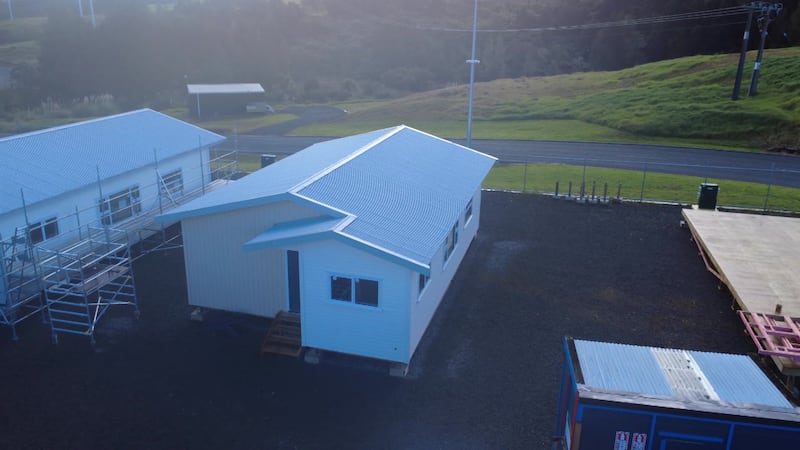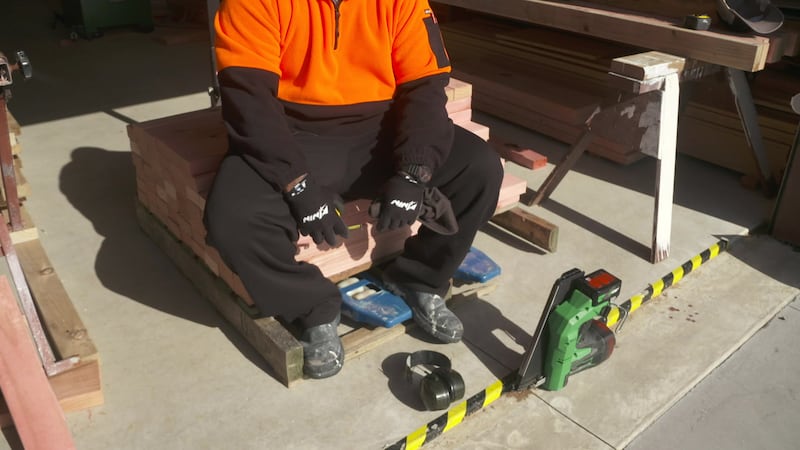For a group of men at Ngāwhā Prison, building houses in Kaikohe is more than a job - it’s a pathway home.
Behind the fences of Northland Region Corrections Facility (NRCF) and beyond them at the Ngāwhā Innovation and Enterprise Park, men are preparing for life after prison by building real homes for real whānau.
“So far, 38 men have been inducted to the site, where they are learning valuable trade skills and gaining qualifications that will help them find meaningful work once released,” says Principal Instructor and Project Lead Lee Tyson.
As of May 2024, Ngāwhā Prison held about 440 men, with around 130 involved in prison industries such as this one.
The programme, launched in March 2024, is a collaboration between the Department of Corrections, Kāinga Ora and Far North Holdings Ltd. It’s designed to replicate a real-world work environment - complete with job applications, CVs and interview prep - and to deliver industry-recognised qualifications aligned with BCITO apprenticeship standards.
Currently, 13 registered prisoner-builders are on site. One whare is nearly complete, with another close behind and construction is underway on five more. The yard has capacity for up to 12 houses at a time and supports training in carpentry, painting, gib-stopping, and soft skills like communication and teamwork.
These are more than just transferable skills - they’re foundations for new lives.
“At the end of the day they’re all people - we all make mistakes,” Tyson says.
“Sometimes we’re just one step away from making a mistake bad enough to get us inside ourselves. People can change - and we see change with the guys here.”

He huarahi whai oranga
One participant says joining the programme was part of his reintegration plan.
“I just thought I’ll get on here and learn to do something for when I get out, so hopefully I can go home and build me a whare.”
He hopes the homes will be appreciated by those who live in them.
“They’re well-done and they’re warm. They’re built with love – we’re quite proud of what we do here.”
But he also acknowledges the fear many face after release.
“There’s always a stigma for us when we return home. I get nervous about getting out because I’m just worried about who would wanna employ us. We’re not all bad, you know. People can change.”
Preparing for life beyond the wire
Corrections has worked to replicate a real-world work environment - from job interviews and CVs to hands-on construction. The qualifications earned meet BCITO apprenticeship standards and are fully transferable.
The site currently supports 13 active builders and has capacity for 30.
Regional Reintegration Manager Rangi Mika says these types of initiatives are vital not just for the men inside, but for the wellbeing of the whole community.
“These are our people coming home - how do we make that the safest for everyone that they can be?”
She says the stigma many face is fueled by misunderstanding.
“Often, as a society, we can be influenced by what we don’t know, what we don’t understand.”
“If we did it from a te ao Māori perspective, we would kōrero more. We would actually start to have those conversations around what does it look like to come home.”

Another man in the programme - who had four years’ experience in an Auckland building apprenticeship before incarceration - says the programme has helped restore his identity.
“I think it’s the freedom here, [it] just makes you feel like you’re out there in the community - like you’re an outside person. You’re not inside that wall.”
The latest whare was blessed this week, ready to become home for a new whānau.



